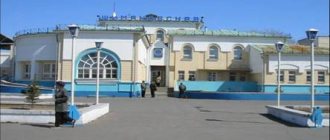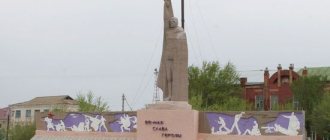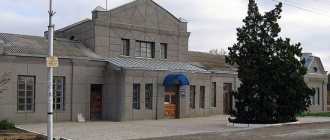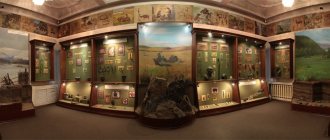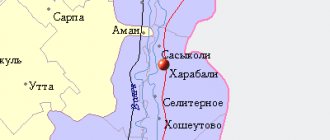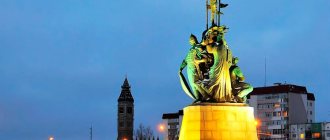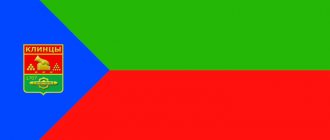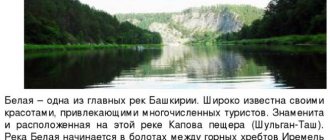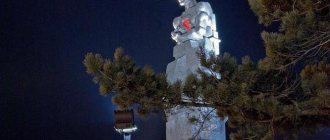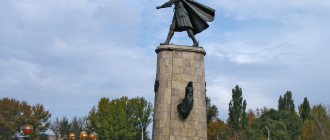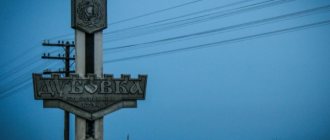Historical and cultural
Just 2 km from the central part of the city there is an amazing place. Travelers will see 14 reconstructed buildings. The appearance of Surgut in the 19th and 20th centuries has been recreated on the territory of the center.
Wooden houses were previously located in different parts of the city. Later they were collected on one territory and formed a single architectural ensemble.
In 2001, the open-air museum complex was replenished with another masterpiece. The new temple “In the name of all the Saints who have shone in the land of Siberia” was built in the best traditions of the Siberian school of wooden architecture.
Address: st. Energetikov, 2.
Sights of Surgut
Some experienced tourists believe that there are very few attractions in Surgut. In fact, there are interesting architectural and historical sites, places for cultural recreation and natural attractions.
Architecture of Surgut
The striking architectural sights of Surgut are the Yugorsky Bridge, temples and Big Ben.
Yugorsky Bridge
The Yugorsky Bridge is the Surgut crossing over the Ob River. Previously, it was possible to cross the Ob only by ferry (in summer) or on ice (in winter). The bridge took 5 years to build, and the foundation date is considered to be 2000. Its length exceeds 2100 meters, and the length of the central span is more than 400 meters. If we count together the approaches to the bridge, then its length is up to 15 km. The structure has 15 supports and its width is 15 meters. The Yugorsky Bridge was included in the Guinness Book of Records (not because of the total length of the crossing, but for the length of the suspended span).
The Yugorsky Bridge carries a highway connecting Surgut with Nefteyugansk. The uniqueness of the structure is that it is supported by only 1 pylon 150 meters high. A tourist may also be interested in the control room, which is located under the bridge. The Bridge Museum was opened here in 2009. The main attraction of the museum is the key with which the building was symbolically opened.
Information for tourists:
- the bridge is located 13 km from the center (highway P404);
- exact coordinates: 61°13'25″N 73°9'35″E;
- Opening hours: daily, 24 hours a day;
- inspection is free.
Today the bridge is considered a popular tourist attraction, and it looks especially beautiful in the bright evening illumination.
Church of the Transfiguration of the Lord
The Church of the Transfiguration of the Lord (Transfiguration Church) is a cathedral built in 2003. The church, built in the style of traditional architecture, is considered one of the most beautiful in the area. Construction of this temple began in 1991, but during construction it was discovered that the architectural style of the building was heterogeneous. So it was decided to replace the already built bell tower with a new, free-standing one. Now this bell tower houses famous bells brought from Moscow. The largest of them weighs 6 tons.
The sights of the temple are ceramic tiles and mosaic icons of Jesus Christ, the Mother of God and John the Baptist (they were made in Moscow, but Italian smalt was used in their creation). And here are the relics of the Glinsky elders.
Information for tourists:
- address: Melik-Karamova street, 76 (between Saimaa and Yugorsky tract);
- official website: https://surgut.cerkov.ru;
- Opening hours: Monday to Friday - from 7:30 to 18:00, on weekends - from 7:30 to 21:00;
- the entrance is free.
The most significant parts of the cathedral iconostasis are images of St. John the Baptist and John of Tobolsk, patron saint of Siberia
Surgut "Big Ben"
Surgut “Big Ben” is the main building of the local school for studying foreign languages. The educational institution was opened in 1997, and the building with the tower was built in 2004. In the outlines of the object, a reference to a London architectural monument is easily visible, but the building was built using new technology. The walls of the castle building were made of besser (a material imitating stone from the Gothic period). The clock installed on the tower is very reminiscent of Big Ben, it was made in Great Britain and covered with gold leaf, but it is three times smaller than the original.
Inside the building there are 20 classrooms, an assembly hall and a concert hall. Along the perimeter of the building there are stained glass windows (made in Yekaterinburg) with images of angels, knights and coats of arms. And the walls and floor are covered with special polished stone. I spend a lot of time on the sights of different countries and cities, but I have never seen such an analogue of an English landmark.
Practical information:
- address: Ostrovsky street, 8;
- exact coordinates: 61°15'23″N 73°23'55″E;
- official website: https://engschool.ru
- Opening hours: Monday to Friday (10:00 to 18:00);
- the entrance is free.
On the ground floor of Big Ben there is one of the city's most popular cafe-bars, English (its walls imitate brickwork, and massive chairs are carved from wood)
Cultural sites
The main cultural attractions of Surgut include museums, memorial complexes and entertainment venues.
Art Museum of Surgut
The Surgut Art Museum was founded in 1992. It is located on the third floor of the Museum Center. There are several sections dedicated to painting (mainly from the 19th-20th centuries), graphics (5,500 watercolors, sketches, drawings, etc.), sculpture (statues, miniatures, reliefs, etc.) and dolls. There is a separate exhibition of ironic art - caricatures, caricatures and designer dolls. The museum replenished its fund through auctions and purchases of works from their authors. The paintings by Petrov-Vodkin and Krymov were the first to be presented in the painting exhibition. Now there are more than 200 works of art.
Practical information:
- address: 30 Let Pobedy street, 21/2;
- official website: https://shm-surgut.ru;
- Opening hours: Wednesday and Friday from 10:00 to 17:00, on Saturday and Sunday - until 17:30, on Thursday from 12:00 to 19:00;
- entrance fee: from 30 to 100 rubles.
The museum hosts the “Art Subbotnik” project: every weekend you can take part in master classes on various types of decorative and applied arts, mainly for children
Surgut Museum of Local Lore
The Surgut Local History Museum was opened in 1963. At first it was located in a 19th-century estate, and in 1999 it moved to a new building and occupied 2 floors. Now this building is called the museum center. On the ground floor there is an Internet room and a cultural center, where the main exhibition is dedicated to the industrialization of Surgut. And on the second floor there are exhibitions dedicated to the life of the northern peoples, the history of the district and the nature of the local latitudes. And also on the second floor there is a so-called Children's living room - a playground.
I always visit local history museums first. Moreover, I try to get to the exhibition of folk crafts. This is a kind of budget excursion into the local color. Having become familiar with the local ethnic culture, I usually decide on souvenirs (sometimes I even write down in a notebook which items I liked). And then I go to the nearest souvenir shop and try to find something similar to the exhibits I saw. Such souvenirs usually look more original. So you can buy not just some magnet with the name of the city, but something more unique: a handmade doll, clay toys, ceramic or birch bark product, etc.
On the ground floor of the museum center there is a cultural and communication center, where there is a large exposition of the history of industrialization of Surgut
The local history museum includes 3 more objects: the Patriotic Heritage Center, the Salmanov complex and the Klepikov estate. The total fund of all museum objects is more than 70 thousand exhibits. The Patriotic Heritage Center opened in 2007. It serves as an exhibition complex for events with patriotic and military themes. Salmanov's house was opened to the public in 2007. This facility is named after a scientist who devoted his life to the oil industry. In fact, this is a memorial complex, the interior of which repeats the decor of the 60s of the 20th century. Exhibitions, creative evenings and celebrations are also held here.
The official name of the Salmanov House is the Memorial complex to pioneer geologists
The house of the merchant Klepikov is the first location of the local history museum. It was built in the 19th century, and its uniqueness lies in the fact that it is the only building of that time that has been preserved in its original location. In 1999, the wooden house was restored and opened to the public. The building can be called a memorial building, since the interiors of the 19th–20th centuries have been restored inside. The museum's collection includes more than 500 exhibits.
Information for tourists:
- center address - 30 Let Pobedy Street, 21/2, Klepikov House - Prosveshcheniya Street, 7, Salmanov House - Tereshkova Street, 49, TsPN - Prosveshcheniya Street, 7/1;
- official website: https://skmuseum.ru;
- Opening hours: Wednesday and Friday - from 10:00 to 17:00, on weekends - until 17:30, on Thursday - from 12:00 to 19:00;
- entrance fee: 100 rubles (child ticket - 50 rubles).
A thematic photo studio has been opened at the Klepikov estate, where visitors can get ancient-looking black and white “yellowed” photos in historical costumes against the backdrop of interiors typical of the old studio.
Surgut Philharmonic
The Surgut Philharmonic was opened in 2003. At first it was a philharmonic center, and the current name was given to the institution in 2010. Philharmonic concerts, performances by pop artists, music festivals and other creative events are held here. The Philharmonic includes a symphony orchestra, the Svetilen chapel, and orchestras of wind and Russian folk instruments. In addition, song, dance ensembles, etc. are based here.
Philharmonic societies are good for their originality. In every city I visited, I always included a visit to a theater or concert hall in my tourist route. In philharmonic societies you can attend an orchestral concert. It is ideal if the performers sing folk songs or play folk music. I begin to better understand the city I came to if I can feel its culture.
Practical information:
- address: Engels street, 18;
- exact coordinates: 61°14'28″N and 73°23'27″E;
- official website: https://sfil.ru;
- Opening hours: from Tuesday to Friday - from 9:00 to 17:00, on Monday - until 18:00;
- The cost of admission depends on the event.
The Surgut Philharmonic provides Surgut residents with an exceptional opportunity, without leaving the city and country, to get acquainted with the best examples of domestic and world musical art
Historical landmarks
A striking historical landmark is Barsova Gora.
Barsova Gora
Barsova Gora is a complex of historical and archaeological monuments. This is a mound on which ancient buildings were found (more than 60 fortifications, Stone Age graves and temples). Some of the sites date back to the Bronze and Iron Ages. An interesting place of worship is the sanctuary of the Kulai culture. The length of the tract is more than 8 km. The oldest finds of this complex date back to the Neolithic. In addition to old objects, there are also monuments of the 20th century (for example, hunting grounds). Barsova Gora not only has archaeological and cultural value, the nature here is also unique. On the territory of the complex you can find relict and endemic plants. It is planned to create a nature reserve.
Archaeologist friends told me about this interesting place. It turns out that some scientists simply dream of being in a place with such a concentration of valuable artifacts. By the way, local peoples believe in the legend according to which the Ostyak prince Bars drowned himself in the Utoploya River, so the tract was named after him. But archaeologists believe that this is not a legend at all, but a historical fact. True, no documentary evidence was found for him. And next to Barsovaya Mountain there grows a sacred tree - larch, which gives strength and relieves mental and physical suffering.
Practical information:
- the tract lies to the west of the village of Barsovo (20 km from Surgut);
- you can get here along the Tyumen tract or along the Nefteyugansk - Surgut highway;
- You can come to the site at any time;
- There is no need to pay for inspection of the tract.
Until very recently, Barsova Gora was a sacred place for the Khanty people (the last sacrificial rites were performed here back in the 1970s)
Natural beauty
There are few natural sites within the city, but among the popular natural attractions is the park “Beyond Saimaa”.
Saimaa Park
Saimaa Park (Beyond Saimaa Park) is a developed forest area within the city. The total area of the park is 60 hectares. There are exits to the city from different sides of the park. Tourists here can visit a botanical garden, a manual zoo, a children's entertainment area, and a reservoir with a floating fountain. The fountain, created in 2003, is installed on a pontoon that moves along a certain route, and at certain hours it begins to light up and “sing.” The park also has a sports ground and a beach on the shores of Lake Saimaa. One of the park's popular natural attractions is tame squirrels (you can feed them and photograph them).
Information for tourists:
- the park is located in the very center of Surgut (it is surrounded by Universitetskaya Street, Proletarsky Avenue and branches of the river);
- exact coordinates: 61°11'30″N 28°41'27″E;
- operating hours: daily, around the clock (the fountain is open from 18:00 to 24:00);
- the entrance is free.
In 2001, they planned to build a car overpass through the park, but the townspeople were outraged, and in 2009 the project was revised
Merchant estate
An architectural monument of the 19th century. The house was built by the local merchant Galaktion Klepikov. After the revolution, the building was nationalized and transferred to the education department.
Since 1974, the city's local history museum has been located in the former merchant's estate. Many exhibits tell about the construction of Surgut.
Recently, the museum opened an exhibition of 300 exhibits dedicated to the years of life of the merchant Klepikov. Samovars, household utensils, paintings, antique furniture, and jewelry will tell you about merchant life.
Address: st. Enlightenment, 7.
Residents of Surgut proudly talk about the Yugorsky Bridge, which connected the banks of the Ob. This cable-stayed bridge is one of the longest in the vastness of Siberia. The pylon supporting the suspended part has a height of 150m. The length of the bridge is about 2 km.
In gratitude for the hard work of the builders, who laid the bridge in harsh conditions, immediately after the opening, a museum was organized next to the bridge. The exhibition includes thousands of photographs and documents telling about the construction of the Yugorsky Bridge and other overpasses in the Khanty-Mansiysk Okrug.
Address: road repair point on the left bank of the Ob River.
An introduction to Surgut would be incomplete if you miss the city’s beautiful churches. Most of the churches and cathedrals were built recently.
Brief description of the city
Surgut is a city in the Khanty-Mansiysk Autonomous Okrug - Ugra. Surgut is a regional center and has the status of a city of district significance. The total area of Surgut exceeds 350 km2, and the population is more than 360 thousand people. It is the largest city in the district, one of the largest in Siberia and the second largest city in the Tyumen region. In 2011, Surgut took 3rd place in the ranking of the richest cities in Russia.
The city is located in the West Siberian Plain (in the taiga). On the left side of Surgut the Ob River flows, and the city's topography is represented by plains, foothills and mountains.
Surgut is located 250 km east of Khanty-Mansiysk, 708 km northeast of Tyumen and 2889 km from Moscow
City `s history
Surgut is one of the oldest cities in Siberia. It was founded not far from the Ostyak fortress of Borodoka. It is believed that the founders of Surgut were a governor, a merchant and a hunter. Since the 17th century, associates of Stepan Razin were sent here, and in the 19th century, the Decembrists. At first it was just a small fortress, but in 1591 the first Gostiny Dvor was built here, which became the center of the development of Siberia. In the 17th century, Surgut was already a large trading city, and at the beginning of the 18th century it became part of the Siberian province, and soon the city became the center of the Tobolsk governorship.
Historians believe that serfdom did not affect Surgut. In 1918, Soviet power was established here. After 2 years, the city became the center of the anti-Bolshevik uprising, but the conflict was suppressed by the Red Army. In 1923, Surgut was deprived of its city status and became a village. But even before the war, industrial production began to develop here. During the war, the Odessa canning factory was evacuated here. Food, textiles and timber were sent to the front from Surgut. Now Surgut is second only to Moscow and St. Petersburg in terms of industry.
How to get to Surgut
Several ways to get to the city:
- By plane from Moscow, Tyumen, Volgograd, Irkutsk, Krasnoyarsk, etc. Airport address: Aeroflotskaya street, 50.
- By train (direct or passing) from Perm, Moscow, Omsk, Yekaterinburg, Ufa, etc. Railway station address: Privokzalnaya street, 23.
- By bus from Ufa, Kurgan, Chelyabinsk, Yekaterinburg and any cities of the Khanty-Mansiysk Okrug. Bus station address: Lenin Avenue, 79.
- By car along the P404 highway (for example, from Tyumen), along the “Siberian Corridor” (from Salekhard or Novy Urengoy) or the “Northern Route” (from Tomsk, Serov or Perm).
The P404 highway passes through Surgut, along which motorists can get to Surgut from Tobolsk, Tyumen, Nefteyugansk and Nizhnevartovsk
Church of the Transfiguration of the Lord
One of the most beautiful temples in the region is located near the river. The majestic temple in the shape of a cross was built according to the design of Moscow architects.
Residents of Surgut collected funds for the temple. Construction lasted 10 years. At the end of 2002, the first service was held in the temple. The largest bell, installed on the bell tower of the Church of the Transfiguration of the Lord, weighs about 6 tons.
Address: st. Melik-Karamova, 76.
Temple of All Saints
Craftsmen from the city of Suzdal built a majestic temple in Surgut in 2002. The building was erected on the site of the first Orthodox church. The local Orthodox community was organized by Russian Cossacks led by V.K. Emelin.
The beautiful temple in Surgut resembles the Yakut Transfiguration Church. During construction, all canons and norms of Russian Orthodox architecture were observed.
Address: st. Power engineers.
Original sculptures are installed on the streets of Surgut. Some structures cannot be found anywhere else in Russia.
How Surgut is preparing for the most magical holiday of the year
Surgut began to prepare for the New Year. The Department of Architecture and Urban Planning assured that by the beginning of December the city will begin to acquire festive elements - Christmas trees, slides, ice sculptures, light installations. By the middle of next month, Surgut residents will be able to fully immerse themselves in the New Year's atmosphere. The order to create a real winter fairy tale on the streets was personally given by the head of the city, Andrei Filatov.
Some jewelry concepts are still being discussed, while others have been determined in advance. For example, the theme of ice towns was known back in August, when a contract was signed with the contractor who would install the sculptures. This year, residents will be delighted by fairy-tale characters. What exactly and when will active work on the construction of towns begin?
The atmosphere of a New Year's fairy tale will soon descend on Surgut. Active preparations for the holiday are already underway. The Department of Architecture and Urban Planning is discussing concepts for city lighting design. As the department told the Surgut 24 TV channel, they are currently looking for additional funding for illumination. Illuminated figures will appear at key intersections and junctions in the municipality. The main task set by the head of the city, Andrei Filatov, is to create a festive atmosphere.
Traditionally, residents will also enjoy ice towns. They will be installed on Central Square, near the Aurora Music and Drama Theatre, next to the Holy Trinity Cathedral on Mira Avenue, in the Kedrovy Log park, a historical and cultural park, as well as behind the Vozrozhdenie residential complex. The theme of the sculptures is fairy tales.
“According to many, the locations of ice towns and Christmas trees are considered successful. Particular attention will now be paid to the central square. There will be a skating rink there,”
– said
Vladimir Astrakhantsev, director of the Department of Architecture and Urban Planning of Surgut.
Heroes from the fairy tales “The Nutcracker”, “Cinderella” and “The Snow Queen” will delight the residents. Each site will be themed around a specific story.
The main place for New Year's festivities will be Central Square. For now it is empty, but soon it will be decorated with a festive tree and light installations. There will even be a flooded skating rink here. The ice figures here will be made in the theme of the fairy tale “The Snow Queen”. The square will begin to transform with the arrival of December, and by the middle of the month residents will be able to fully enjoy the holiday atmosphere.
The concept of holiday lighting is still being discussed, but there are decisions that were made long before winter arrived. For example, the contract for the construction of ice towns was signed back in August. Now all the sketches have been approved and soon the contractor, a company from the Sverdlovsk region, will begin work. There is experience, the Urals decorated the squares of Khanty-Mansiysk, Uray and Yugorsk for the New Year. In Surgut - for the first time. Head Alexander Bondarenko
assured that his team employs highly qualified artists and ice carvers. Therefore, Surgut residents can expect a real immersion into the world of fairy-tale characters.
“At the moment we are preparing the reservoir for ice extraction, but since the ice has not yet reached the required thickness, we are waiting. We are planning to start making frames for wooden slides next week and start delivering ice. Accordingly, construction immediately. We build safe slides, we comply with all requirements, all GOSTs,”
– explained Alexander Bondarenko.
The theme of fairy tales will also become key at the annual city festival of ice sculptures in the historical and cultural. This year, residents will be delighted by characters from the works of Korney Chukovsky
. This author was chosen for a reason. The writer's bicentenary will be celebrated in 22. In addition to the sculptures, slides will also be installed on the territory of the ICC and an ice skating rink will be installed.
“The date and time are to be determined, but usually it is December 15-20. What will you be able to see? Let’s lift the curtain a little on the grand opening of the winter event - these will be the favorite characters from Korney Chukovsky’s fairy tales: Doctor Aibolit, Bibigon, Mukha Tsokotukha and other no less favorite fairy tale characters.”
,” shared historical and cultural specialist
Oksana Kovalchuk.
Surgut residents, in turn, noted that they are looking forward to the New Year's atmosphere descending on the city. According to residents, on the eve of the holiday, decorations on the streets, slides, Christmas trees and ice towns are especially important for children.
– They believe in this holiday, they believe in Father Frost, they believe in the Snow Maiden. It’s not for nothing that all this is ordered for them. These holidays are organized for them. This is probably why everyone does these holidays.
– New Year is a holiday. New Year is a mood, there should always be a feeling of something magical.
– New Year is such a family holiday, everyone celebrates it with their family, recently due to Covid restrictions, due to the pandemic, some kind of atmosphere is blowing. Still, it seems to me that it invigorates people more or less.
– At least for the child, so that it would be joyful, to create a New Year’s mood.
Surgut courtyards will not stay away from the holiday either. Local community associations will install slides and Christmas trees near houses. For now, the locations and number of winter play areas are being discussed. But we know for sure that the New Year’s atmosphere can be felt not only while walking along the central streets of the city, but also simply by looking out the window.
Monument to a Smile
Laughing fish and a mermaid in a hat with earflaps. A funny sculptural composition always evokes good feelings. Author: Oleg Dergachev.
They say that once upon a time there lived a funny fish in one of the lakes. Perhaps this is a true story?
Address: st. 30 years of victory.
Research work “Sights of the city of Surgut. Monuments."
Slide 1
Electronic catalog of monuments of the city of Surgut. From Urgut 2013.
Slide 2
Monument to the “First Builders of the New City” A little-known monument to Surgut residents is located near the new SIA-PRESS office. Presumably it was installed in the mid-seventies and was made using a rare technique - majolica (fired clay). It will be included in the register as the “Monument to the Founders of the New City.” Installed in 1960
Slide 3
Memorial of Glory A granite structure, on the right and left sides of which there are 16 slabs with the names of more than a thousand front-line soldiers who did not return from the battlefields during the Second World War. In 1975, a gas main was connected to the memorial, and the Eternal Flame was lit. In 1995, a stone chapel was built on the site of the Trinity Church. In 2004, reconstruction of the Glory Memorial began (the author of the project is N. Mazurenko). It was installed in September 1968. Monument to the fighters for Soviet power, the Surgut soldiers who died during the Great Patriotic War.
Slide 4
Monument to the first Komsomol members The names of the first 16 Komsomol members of Surgut are carved on the monument, as well as words of dedication from the youth of the 60s (author - N. Ezdakov): “They accomplished the Promethean feat, tearing us out of ignorance and darkness.” The monument plays a big role in patriotic education. Was installed on the street. Melik - Karamova (Geologists Square) in October 1969. The authors of the project are students of the Lviv Polytechnic Institute Oleinik I., Sergeev Yu
Slide 5
Monument to the first exploration R-1 One of the oldest and most forgotten monuments is the monument to the first exploration "R-1". It is located on Tereshkova Street. It was installed in July 1970.
Slide 6
Mosaic panel “Madonna and Child” The mosaic depicting a woman with a child on the wall of the air terminal appeared 4 years after the construction of the building. The authors Grigory Polishchuk and Svetlana Shcherbina first wanted to decorate the facade of the building with a wind rose, an airplane or a helicopter. But they settled on a woman with a child in the porthole, known to all Surgut residents. It was installed in September 1970.
Slide 7
Monument to the “Courage of the Fishermen of Surgut” During the war years, 280,000 quintals of fish were handed over to the Motherland; Over the 70-year history of the fish processing plant, 213,000 tons of raw materials were produced. On the territory of the fish processing plant, built in 1972, there is a monument to the courage of fishermen during the Great Patriotic War. Sculptor Gorda V.
Slide 8
Monument to the “Courage of the Fishermen of Surgut” Currently, part of the monument dedicated to the courage of the fishermen during the Second World War adorns one of the garden plots
Slide 9
Stela “Torch” Stela “Torch” or “Broken Pipe”. Located in front of the Gazprom building, the composition belongs to the category of park sculptures, made in the spirit of the avant-garde by the famous sculptor of the times of socialism, Honored Artist of Russia Yu. Vavakin. It was installed in 1982 - 1984.
Slide 10
Monument to the Bulgarian leader Georgi Dmitrov. This is Georgiy Dmitrov, the leader of the Communist Party of Bulgaria, an outstanding revolutionary, an uncompromising fighter against fascism, General Secretary of the Central Committee of the BCP and simply a mighty friend of the Soviet Union, who after his death was called the leader of the Bulgarian people and was placed in a mausoleum in Sofia. The bust was erected in Surgut in 1987 with the participation of Bulgarian builders to commemorate joint work. And, by the way, the tiny park in which the monument stands is called the Russian-Bulgarian Friendship Square. And no one knows about this either. Located in the Friendship of Peoples park.
Slide 11
Sculptural composition “Pegasus” The sculptural composition was made in the workshop of A. Bondar. In Greek mythology, a winged horse born from drops of the blood of the gorgon Medusa killed by Perseus. Located on the street. Energetikov, 49/1 (yard of the Znamensky school). Was installed in 1989.
Slide 12
Sculptural composition “Aurora” Sculptor A. Kovalchuk embodies the goddess of the dawn. Located on the street. Lenin (square in front of the Aurora cinema). It was installed in July 1994.
Slide 13
Small sculptural forms “Zodiac Signs” Sculptural forms were opened in 1994, at the Municipal Cultural Center on the street. Sibirskaya, 2. The sculptural forms are made of iron and represent the signs of the zodiac around the planet “Sun”. Unfortunately, today most of the established small forms have been lost, only 2 remain - “Sun” and “Aquarius”.
Slide 14
Memorial obelisk to the people of Surgut It was opened in 1945, then lost. Architect - Mazurenko N., Olenin V. - artist. It was originally erected at the river station in 1945 in wood, restored on May 8, 1995. The modern monument is a white marble stele (weight 8 tons), made in Yekaterinburg. Restored in 1995. River station embankment
Slide 15
Monument to Internationalist Soldiers Created on the initiative of the public organization of veterans of military operations in Afghanistan “Salang”. There are slabs with the names of Surgut residents who died in combat in “hot spots”. This is the center of the spiritual life of the townspeople: the monument was created with public money and the care of its maintenance rests on a voluntary basis with fellow soldiers and comrades. Was installed on the street. Energetikov (Central Square") in October 1998. Sculptor P. Lyubimov, artist K. Soprichan, architects N. Mazurenko, V. Unzhakov.
Slide 16
Monument to A.S. Pushkin The monument to the poet - Alexander Sergeevich Pushkin - was made in the city of St. Petersburg. Sculptor A. Dema, architects N. Sokolov, S. Mikhailov, installed in 2001. Made of red polished granite and bronze, the total height of the composition is 6 meters. Was installed in 2001.
Slide 17
Monument to the “Book” Works by sculptor Alexander Kapralov. A graduate of the Omsk “hoodgraph” works not only with metal, his works in stone and wood can be seen in many museums. Located on the territory in front of Surgu State University. Was installed in July 2002.
Slide 18
Sculptural composition “To the Discoverers of the City of Surgut” The monument was erected in the very center of Surgut in 2002. Prince Fyodor Boryatinsky, governor Vladimir Anichkov, an unnamed priest and a Cossack carpenter are immortalized in bronze. It was installed in 2002. The composition is symbolic: the personification of the ideas of statehood (prince), military power (voivode); the figure of a clergyman is an image of the idea of Orthodoxy, which came along with the Tsar’s people to the land of Ugra. Square of the 400th anniversary of Surgut.
Slide 19
Monument to the builder Iron Man. The monument is dedicated to those who fought for Surgut in difficult conditions. The sculpture looks very unusual. In a robe, a helmet with three letters SMU stamped on it, with a cigarette in his hand, the builder seems to be appraising the fruits of his labor - a multi-storey building under construction. The figure of the builder is central, and therefore the largest, it symbolizes that the main thing in any profession is people. But local builders expressed dissatisfaction with the statue. The builders believe that their “iron colleague” with a cigarette in his hands distorts the culture of those who built the North. The monument to the builder Iron Man was erected on the pedestrian zone of the Prometheus store, installed in August 2003.
Slide 20
Monument to the first train The railway from Tyumen to Surgut is 700 km long. became one of the most important construction projects during the years of development of the oil and gas expanses of the Tyumen North. Work began in 1966, and in the summer of 1975 the first freight train arrived at the Surgut station - the cars were carrying four thousand tons of cargo. Located on the square near the train station. It was installed in October 2003. “TEZ-1072 Diesel Locomotive” (original). The very first diesel locomotive that arrived in Surgut became a monument. Great importance was attached to the development of transport in areas where new oil fields were being developed. The accelerated development of Samotlor would have been impossible without railways.
Slide 21
Sculptural composition “Monument to the Smile” Looking at a laughing fish with a mermaid in a hat with earflaps, it is simply impossible to remain gloomy. Located on the street. 30 years of Victory, 21/2 (Museum Center). Was installed in June 2004.
Slide 22
Monument to the aviators of Surgut The monument to the aviators of Siberia was erected on the 40th anniversary of the formation of the Surgut United Air Squadron. It was erected on the square in front of the Surgut air terminal. An Mi-6 helicopter is installed on a special pedestal as a monument. Mi-6 helicopters made a huge contribution to the development of Western Siberia. Having been the most powerful and load-lifting helicopter for a long time, this machine has established itself as a reliable, indispensable assistant. In the harsh conditions of the North, Mi-6s performed difficult work, helping geologists and oil, gas and energy workers. Helicopter MI-6 (original). Located on the square in front of the airport terminal. Was installed in August 2004.
Slide 23
Sculptural composition “Flight” Made of stainless steel. The soaring “half bird, half plane” symbolizes the aspiration to a renewed and bright life. Located at the entrance to Surgut from the airport. It was installed in May 2005. The author is a member of the Union of Artists of Russia I. Machkevsky. Architect V. Safarov.
Slide 24
Busts of Heroes of the Soviet Union Busts of Heroes of the Soviet Union I. Korolkov and T. Azhimov. It was installed in August 2005. Ivan Korolkov also received his hero star for crossing the river, only not the Vistula, but the Dnieper in 1943. As part of a machine gun unit, he carried out the task of distracting the Nazis from the main crossing point. A handful of fighters began crossing under cover of darkness, taking the fire upon themselves. Among the few, Ivan Korolkov reached the opposite bank and launched an attack on the Germans. Despite his injury, he was able to kill about a hundred German soldiers. At this time, the remaining units successfully crossed the Dnieper. For exceptional courage shown in battles with the Nazi invaders.
Slide 25
Busts of Heroes of the Soviet Union I. Korolkov and T. Azhimov. It was installed in August 2005. Azhimov went to war from the village of Black Cape in 1942. He was working in a fishing artel when the summons to the front came. Tulebay took part in the battles near Staraya Russa, in the Bryansk forests, and during the liberation of Belarus. But he especially distinguished himself in Poland. He was awarded the title of Hero of the Soviet Union for his courage and heroism during the crossing of the Vistula River, for the exemplary execution of the command’s combat mission to expand the bridgehead on its western bank.
Slide 26
Monument to T. G. Shevchenko Monument to the Ukrainian poet and revolutionary T. Shevchenko, erected at the expense of V. Samborsky. Was installed on the street. Ostrovsky, 16 (near the Kamerton House of Culture) in September 2005. The author is sculptor A. Tsymbal (Omsk).
Slide 27
Monument to Karl Marx The question of legalization was raised 21 years later, and only because funds were required for the reconstruction of the monument. To do this, the Department of Property and Land Relations needed to apply to the court to declare the monument to Karl Marx ownerless. Only after this, gymnasium No. 4 was recognized as the operating organization of the monument. Currently, it is installed on Energetikov Street, in the courtyard of gymnasium No. 4. The sculpture is already 21 years old. The cast-iron Karl Marx was installed in 1984 in honor of the opening of educational school No. 18 (now gymnasium No. 4). However, all these years it was not listed in the register of city monuments. When the technical passport of the OS was being prepared, documents on land allotment were being drawn up, this object was simply not included in them.
Slide 28
Monument to the employees of the Yugra land who gave their lives in the name of the triumph of the law. Territory of the training center of the Internal Affairs Directorate of the Khanty-Mansi Autonomous Okrug (village of Zvezdny). The monument was created according to sketches and at the expense of a group of students of the training center of the Internal Affairs Directorate of the Khanty-Mansi Autonomous Okrug. Was installed in November 2005.
Slide 29
Small sculptural forms “Fairytale Animals” Animals have settled in Energetik Park. All figures can not only be photographed, but also touched. For example, if you rub a pig's snout, the student can get the coveted A. Located on the territory of the Energetik park. Was installed in June 2006.
Slide 30
Figure “Black Fox” The idea of creating the monument belongs to the Tobolsk bone carver sculptor Minsalim Timergazeev. The bronze figure was cast at the International Center for Culture and Art in St. Petersburg, and delivered to Surgut by plane. Located on the street. Energetikov (square in front of the ICC “Old Surgut”). Was installed in June 2006. The figure was installed on the territory of the Historical and Cultural Center in June 2006. He is the coat of arms and patron of the city. According to legend, the fox was red. And not a fox at all, but a reincarnated heavenly horseman, who descended to earth in this guise and turned black after the fire
Slide 31
Monument to the “Nurse” The initiator of the project is the head physician of the Trauma Center S. Tarasenko. The author is sculptor N. Yanchak. 600 kg of bronze were used to cast the statue, its height is 3 meters. Made at the Sverdlovsk foundry. This is the only monument to a civilian nurse erected in Russia. Located on the street. Ostrovsky (near the trauma center). Was installed in June 2007.
Slide 32
Sculptural composition “Aibolit with animals” The sculptural composition consists of animals who came to see the doctor and Aibolit himself, sitting on a bench with a stethoscope pointed at the next place on the bench. Now Surgut children can sit and take a photo with the good doctor during the “appointment” Located on the territory of the Children's Clinic. Was installed in June 2009.
Slide 33
Bust of F.K. Salmanov Bust of the discoverer of Ugra oil Farman Salmanov. It is installed near the house where the geologist lived upon his arrival in Surgut during the first geological exploration expedition. The marble bust was made in St. Petersburg by sculptor Jan Neumann. He tried to convey with the help of the stone the character traits inherent in Salmanov in life. Tereshkova, 49 (Memorial complex “House of F.K. Salmanov”). Was installed in July 2009.
Slide 34
Monument to the T-55 tank It received headlights, antennas, a night vision device and additional 200-liter fuel tanks. The components were removed from other equipment and can safely be called original, with the possible exception of the machine guns. They were made from ordinary metal tubes. The tank even has its own serial number, which not only distinguishes it from other vehicles, but also shows that it belongs to our region. It was installed in May 2011 on the territory of the “Glory Memorial”. The T-55 tank appeared at the Glory Memorial in May 2010 for the 65th anniversary of the victory. True, unlike its predecessor T-34, which visited Surgut in transit, it did not participate in the Great Patriotic War. Fifty-five were brought from the Chelyabinsk region. In March 2011, the tank was sent for repairs. The 40-ton vehicle was loaded onto KAMAZ and sent to the UTT-5 base of Surgutneftegaz OJSC. The specialists of this organization repaired the equipment and put it in order.
Slide 35
Monument to Ermak This is the first monument to the hero in Western Siberia. The monument was created by sculptor Konstantin Kubyshkin, a graduate student at the Russian Academy of Arts. They made the monument in the town of Zhukovsky near Moscow. Located on Naberezhny Avenue, 31, square in front of the Ermak Hotel. It was installed in July 2010. The grand opening of the monument to the conqueror of Siberia, the Russian Cossack ataman Ermak Timofeevich, took place on the territory of the Ermak Hotel.
Slide 36
Stele “Square in Memory of the Chernobyl People” On April 25, 2010, in the park on Chekhov Street, a stele dedicated to the participants in the liquidation of the consequences of the Chernobyl nuclear power plant accident and other radiation and man-made disasters, nuclear and chemical weapons tests was opened and consecrated. It was installed in September 2010.
Slide 37
Monument to fighters for cleanliness “Ivanovich” An unusual monument appeared in Surgut - a sculpture of an elk with a broom, wearing a hat and coat. It was installed near the building of the Committee on Natural Resources and Ecology. This is a gift to the city from fighters for cleanliness. The author of the original monument is one of the local officials. They have not yet come up with a name for the monument - the city authorities are asking residents to do this. By the way, the townspeople reacted quite favorably to the appearance of such a sculpture. There was a whole line lined up for the photo shoot at the concrete moose. Located on Administrative Ave. Was installed in August 2012.
Slide 38
Thank you for your attention!
Monument to the black fox
The bronze figurine was installed on the eve of the city day. The author is Tobolsk bone carver sculptor Minsalim Temirgazeev.
According to legend, in ancient times, a noble horseman in the form of a fox descended from heaven to protect the Surgut lands. The graceful beast is located near the city center.
Address: st. Power engineers.
Monument to the Nurse
In front of the entrance to the trauma center there is the only monument to a nurse in Russia. The author is Surgut sculptor Nikola Yanchak.
The local doctors liked the figure of a fragile girl rushing to call a sick person. The doctors thanked the author for his attention to their profession and noted that this is how most city residents imagine a caring nurse.
Address: st. Ostrovsky.
Monument to the builder
It is impossible to pass by this original sculptural composition. Many residents of Surgut consider this creation of Alexander Kapralov to be the most original monument of the city.
“Iron Man” is what locals call the handsome builder. Tourists spend a long time looking at the details. Since 2006, the unusual sculpture has become a prominent landmark of Surgut.
Looking at this amazing monument, you can understand how much the townspeople value the work of the builders who built the city in harsh conditions. The sculptural composition was made with love and warmth. City construction companies allocated money to create a smiling guy in a safety helmet.
Address: st. Magistralnaya.
